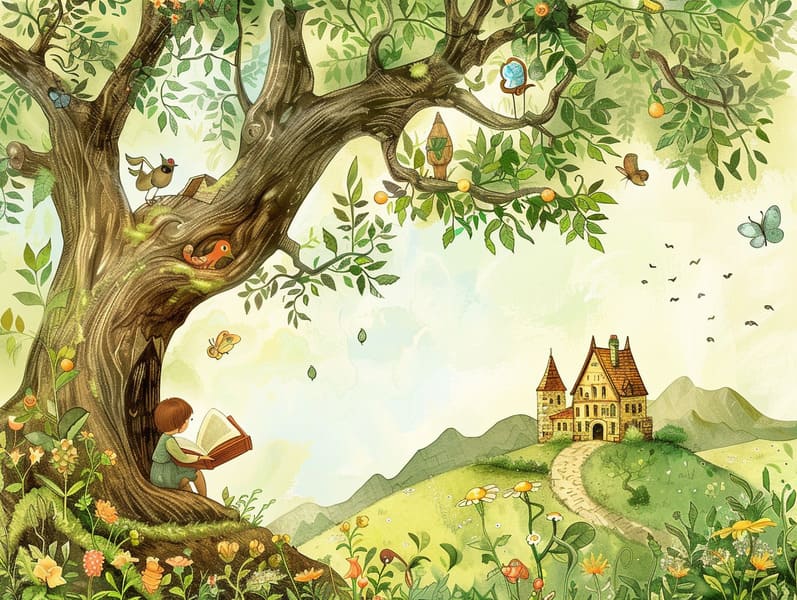The Story Behind Popular Fairy Tales and the Consistent Attraction.
The Story Behind Popular Fairy Tales and the Consistent Attraction.
Blog Article

Timeless fairy tales have historical significance. These stories have been recounted from one generation to the next ages before they were ever documented. They sprang from a variety of civilizations, including Indigenous traditions. They were initially transmitted among older generations, often carrying themes and messages reflective of the societal norms and beliefs of the time.
Jacob and Wilhelm Grimm, Jacob and Wilhelm Grimm, were among the first to collect many of these beloved narratives. Their volume, "Grimm's Fables," included narratives like "Ashenputtel," "Hansel and Gretel," and "Little Snow White," which have since become mainstays in the world of beloved fairy tales. Similarly, H. C. Andersen's fanciful tales, such as "The Sea Maid," and "The Story of the Ugly Duckling," have captured hearts worldwide, establishing their place in the pantheon of classic fairy tales.
Even though they are old, these stories remain as meaningful as ever, especially as bedtime stories for kids. These charming stories are now available in numerous formats, including richly illustrated books, whimsical animations, and online storybooks.
Their continued relevance can be attributed to several delightful features:
Life Lessons: Old fairy tales often whisper important moral lessons. Tales like "The Tale of the Boy Who Cried Wolf" teach the importance of truth, while "The Hare and the Tortoise" highlight the qualities of steadfastness and unassuming nature. These stories offer young readers clear distinctions between truth and falsehood, guiding their moral compass in a soft yet significant way.
Warmth and Understanding: Traditional fairy tales frequently showcase protagonists facing struggles and tests, fostering kids to comprehend with their struggles and rally behind their triumphs. For instance, "Beauty and Her Beast" points out the importance of seeing inner beauty to see the true character of a character, promoting perception and recognition.
Cultural Understanding: Many classic fairy tales are rich in the cultural contexts from which they developed. Reading these stories can provide delightful insights into different traditions, strengthening a sense of global insight and perception.
Fantasy and Imagination: The enchanted elements in traditional fairy tales—mythical creatures—encourage children’s fantasy worlds. These fairy tales transport readers to supernatural realms, boosting inventive thinking and a sense of awe that stays a lifetime.
Classic fairy tales are not only magical but also enlightening. They function as spellbinding tools in fostering various thinking and feeling skills in young readers. When old fairy tales are told out loud, they promote verbal development by presenting new lexicon and sophisticated sentence structures. This practice also promotes hearing abilities and attention, as young readers keep up with the story, anticipating to see what happens next.
Furthermore, reflecting on the themes and characters of old fairy tales can advance critical thinking and thinking skills. Young ones are led to pinpoint patterns, predict happenings, and know cause and effect. These analyses also assist kids convey their thoughts and feelings, cultivating their emotional intelligence.
In today’s electronic age, the proliferation of online fairy tales has made these narratives more obtainable than ever. Web-based platforms and online apps supply vast collections of Grimm's fairy tales that can be experienced or listened to anytime, anywhere. Fairy tales narrated are particularly well-received, giving an engaging way for the young to delight in these entrancing tales. Audiobooks and read-out-loud videos bring characters and settings to life, often complemented by spellbinding melodies and musical scores that augment the storytelling experience.
The unending appeal of ancient fairy tales lies in their ability to adapt to modern society while keeping hold of their central values. Contemporary adaptations of these tales often highlight more varied figures and modern settings, making them relevant to Grimm's fairy tales collection today’s audience. However, the essential messages of fearlessness, kindheartedness, and righteousness remain unchanged, continuing to impact readers of all ages.
Traditional fairy tales also offer a sense of warmth and knownness. They impart a coherent narrative with a definite beginning, middle, and end, often closing with the ending of conflicts and the triumph of morality over immorality. This dependability can be easing for young ones, gifting a sense of invariability in an variable world.
Timeless fairy tales continue to bewitch and instruct new generations, maintaining their radiance and applicability in modern society. As children's bedtime stories, they put out a perfect blend of charm and enlightenment, sustaining moral values, empathy, and creativity. The existence of online fairy tales and the well-received status of fairy tales spoken confirm that these old narratives remain accessible to new generations.
By sustaining and spreading these fairy tales, we continue to treasure the rich tapestry of legends and cultural heritage. Whether you are experiencing a vibrantly illustrated book, exploring a electronic library, or listening to an audiobook, the captivation of Grimm's fairy tales is always within reach. These fairy tales demonstrate of the consistent effect of stories and its ability to gather us across epochs and places.
Regardless if you are enjoying a vibrantly illustrated book, browsing a online library, or listening via an voice book, the grandeur of famous fairy tales is always within reach.
These narratives show us of the unceasing strength of fairy tales and its ability to unify us across epochs and places, establishing a link that fascinates and enlightens alike.